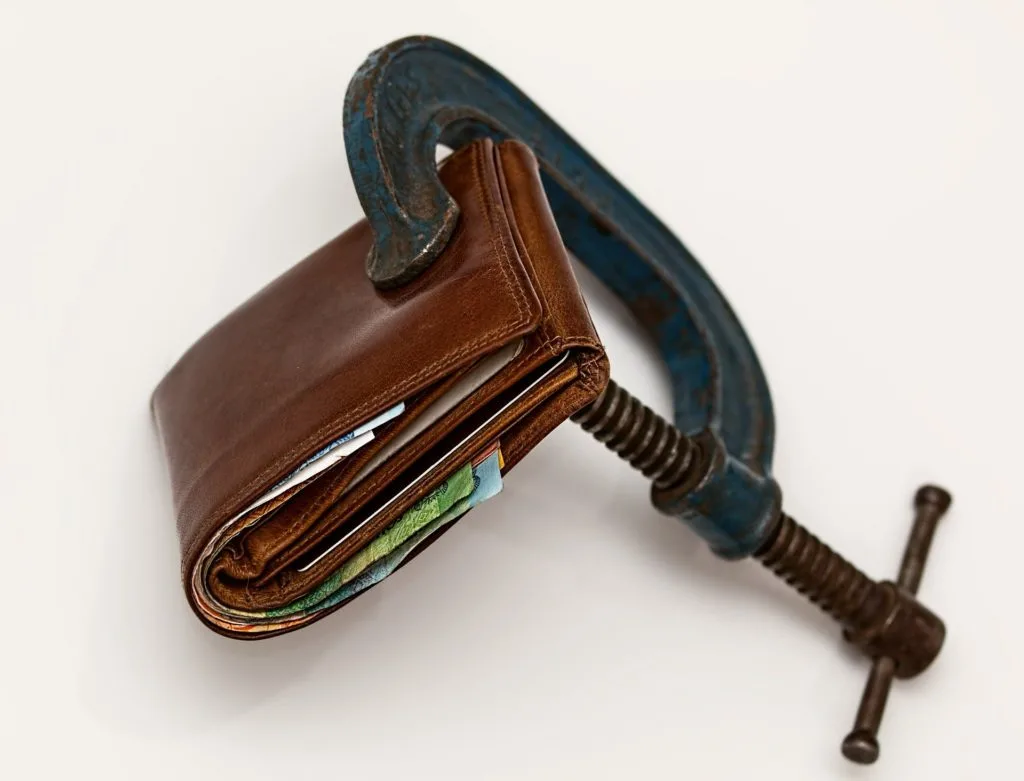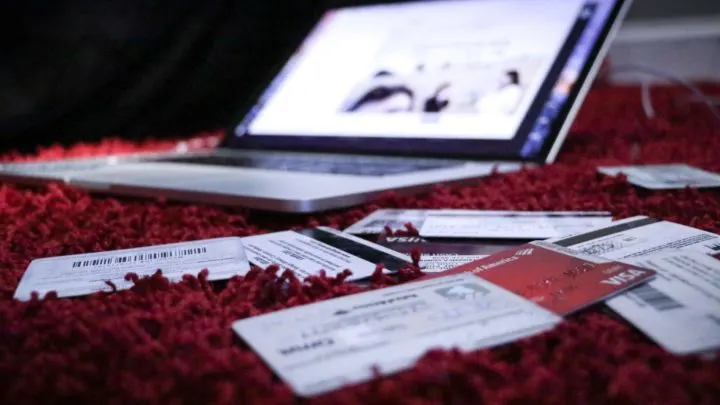At one point or another, nearly everyone has asked: How do I get out of debt?
Carrying debt can feel like a heavy burden, weighing on not just your financial life but also on your long-term goals, mental health, and emotional well-being. While it can be a stressful process to pay off significant debts, there are many organizations and strategies that can help you successfully become debt-free.
In this piece, we’ll discuss a variety of strategies of how to get out of debt, including bankruptcy, settlement, and paying down the debt.
How Do I Get Out of Debt? Create a Plan
Creating a plan to manage your debt may be the single most important tactic you can take to get out of debt. Without a clear strategy for how you’re planning to pay off debts, you’re more likely to be undisciplined and disorganized as well as waste time and money.
Here are a few steps to create a plan to pay off your debt.
Collect Information on Your Debts
To start, create a list of all your debts. Some of your debts could include credit card debt, medical debt, auto loans, student loans, and personal loans. While you’re digging up this information, be sure to collect such details as the amount you owe, the creditors you owe, your minimum payment each month, and the interest rates on the debt. Write down this information or jot it down on a computer.
Create a Spreadsheet
If you have access to a computer, you can use Google Sheets for free to create a spreadsheet containing all of your debt information. You can find other free spreadsheet tools here. If you don’t have a computer, you can also access these tools from public computer labs and libraries.
With a spreadsheet, you’ll be able to clearly see and track your all debts in one place. In addition to collecting your debt amounts, payment minimums, and interest rates, other helpful information you can include are URLs to creditors or resources, creditors’ contact info, account login information (make sure it’s secure if you do this) as well as add math functions that can update the spreadsheet as you pay down the debt.
Keep Your Plan Organized
Whether you use a pen and paper or a spreadsheet, staying organized will help you in your journey of paying off debt. Having your debt information in one place can make the process of paying down debt not only feel more manageable but can help you make decisions as we will discuss below. Watching your debts steadily go down can be an encouraging experience and provide confidence that can help you get out of debt.
Got a Debt Question?
If you’ve got questions about your specific legal situation, you can click here to chat with a lawyer now. Our friends at JustAnswer have a 24/7 service that can help you with credit card debt, collections, defective products, bankruptcy, extended warranties and more! Get all of your questions answered today.
Paying Down Debt
There are a variety of proven strategies to repay debts that can help maximize your time and money. Let’s look at a few of the most popular approaches to pay down debt.
The Debt Snowball Strategy
If you can manage more than your debts’ minimum monthly payments, the debt snowball is a popular repayment strategy that can optimize your time and money.
The basic idea of the snowball strategy is to pay your monthly minimum payments on all debts and focus whatever additional funds you can on your smallest debt. With this strategy, you’ll more quickly eliminate a loan or debt payment and then move onto the next smallest — hence the name snowball.
For example, say you have a $20,000 in student loan, $10,000 car loan, and a $5,000 credit card balance. With the snowball, you’ll make minimum payments on each loan and then pay whatever extra you can toward your credit card bill. By knocking out one debt at a time, you can better hone your financial efforts and generate momentum toward eliminating debt entirely.
There are a few occasions in which you shouldn’t use the snowball debt strategy. If you have a payday loan, a title loan, or another high-interest debt, you should pay these debts off as soon as possible as they accrue debt much faster. Some payday loans charge up to 400 percent APR, or annual percentage rate, which makes them much more costly.
The Debt Avalanche Strategy
The debt avalanche is another popular, and effective, method to pay off debt.
With the avalanche, you pay your monthly minimum payments on all debts and then allocate whatever other funds you can toward the debt with the highest interest rate. This strategy allows you to save the most money in interest payments in the long run.
Say you have the following debts:
- $5,000 in credit card debt at 17.99% APR
- $15,000 in student loan debt at 4.99% APR
- $7,000 car loan at 3.50% APR
In this scenario, you’d pay your monthly minimum payment on each debt, and then put whatever else you can afford toward the credit card debt. That will allow you to mitigate the larger interest payments and any late fees associated with the credit card. The snowball approach, by contrast, would entail you pay toward the car loan first.
Oftentimes, credit cards are the first debt to attack in the avalanche method as they typically have high annual percentage rates and charge late payment fees. Make sure to check each of your debts’ APR to determine where you should focus your efforts.
Get debt relief assistance today!
Struggling with debt? You’re not alone! You may be eligible for help from CareConnect USA’s secure debt relief line. Call them at 866-530-9949 today!

Debt Consolidation
Another common method to pay off your debt is debt consolidation.
With debt consolidation, you combine multiple debts into a single payment. The debt consolidation process can get you a lower interest rate on your debts, which will lower costs and help you pay them off faster. Here are a few common debt consolidation tactics.
Refinance Your Loans
Refinancing is the process of replacing a loan with a new loan that pays off the previous loan in full. The goal is to find a new loan that has better terms that help your overall finances, such as with a lower monthly payment or interest rate.
You can refinance student, personal, auto, and mortgage loans. Refinancing can often help save people money and help them pay off debts fast. Before you refinance, check to see if your lender charges a prepayment penalty if you pay off your loan too quickly.
Fixed-Rate Debt Consolidation Loans
With a debt consolidation loan, you’ll connect with a bank, credit union, or other financial institution to get a loan that will go toward paying off your other debts. After that, you’ll make payments on the loan in installments over a set period of time. Many people with bad or fair credit — 689 points or lower — can get debt consolidation loans, however, those with better credit will pay lower interest rates, according to Nerd Wallet.
Promotions for 0% Interest Balance-Transfer Credit Card
While you’ll likely need a good or excellent credit score, you also can find promotions for a 0% interest balance transfer credit card. With this approach, you’ll transfer all of your debts into one credit card and pay off the full balance during the credit card’s promotional period to avoid interest charges.
Debt Settlement
Debt settlement is the process in which a borrower and lender agree to settle the debt for less than what’s owed. Because of debt settlement’s financial risks, you should avoid it if you’re able.
Debt settlement is typically only an option if you’ve missed several payments and have possibly entered into collections. Typically, the borrower must demonstrate financial hardship or an inability to pay to receive debt settlement.
While a better deal on your debt sounds nice, debt settlement is risky. Debt settlement will significantly hurt your credit, and your debts will still accrue penalties, fees, and interest. In addition, most debt settlement companies charge steep settlement fees once the debt is paid off.
Chapter 7 Bankruptcy
Bankruptcy is a legal process in which a person or business is unable to repay debts. Filing bankruptcy provides people or businesses freedom from their debts while also offering their creditors a chance to recoup some of the debt.
While there are several types of bankruptcy, Chapter 7 Bankruptcy is the most common and fastest form. Chapter 7 bankruptcy will eliminate most of your uncollateralized debts, including medical bills, credit card debt, and personal loans.
In exchange, the bankruptcy process will liquidate — or sell — your nonexempt assets, which could include family heirlooms of high valuations, second homes, some home equity, cash, stocks, and bonds. Exempted property from Chapter 7 liquidation includes a portion of the equity in the debtor’s home, household goods, clothing, tools for trades, and a personal vehicle worth up to a certain value, according to Investopedia.
Some debt isn’t eligible for Chapter 7 bankruptcy, including court judgments, back taxes, alimony, and child support, according to Nerd Wallet. Student loans also are typically not eligible.
To qualify, you’d have to complete a means test, which will analyze your income, assets, and expenses. You also cannot have filed Chapter 7 bankruptcy within the last 8 years.
Chapter 7 bankruptcy will significantly hurt your credit for at least 10 years and should be considered a last resort to pay off debts.
In Conclusion
Paying off debt isn’t fun — but it is possible. Make a plan and stick to it. Consider finding a trustworthy credit counselor to guide you and check out these recommendations from the Federal Trade Commission on how to cope with debt.
In addition to creating a debt plan, it’s also useful to make a budget. Learn more about how to create a budget here.
Through this article, we hope you’ve learned more about the strategies of how to get out of debt, including methods to pay down debt, refinance loans and eliminate your debt entirely.

